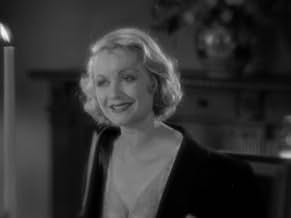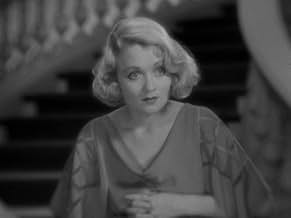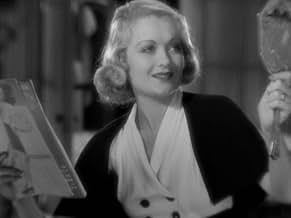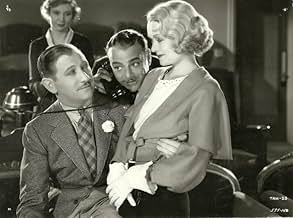IMDb RATING
7.0/10
2.7K
YOUR RATING
The career of a waitress takes off when she meets an amiable drunken Hollywood director.The career of a waitress takes off when she meets an amiable drunken Hollywood director.The career of a waitress takes off when she meets an amiable drunken Hollywood director.
- Nominated for 1 Oscar
- 1 nomination total
George Reed
- Undetermined Secondary Role
- (scenes deleted)
Alice Adair
- Undetermined Secondary Role
- (uncredited)
Eddie 'Rochester' Anderson
- James - Max's Butler
- (uncredited)
Sam Armstrong
- Undetermined Secondary Role
- (uncredited)
Zeena Baer
- Secretary to Julius Saxe
- (uncredited)
King Baggot
- Department Head
- (uncredited)
Gerald Barry
- John Reed - an Actor
- (uncredited)
Floyd Bell
- Undetermined Secondary Role
- (uncredited)
Veda Buckland
- Nana - Jackie's Nursemaid
- (uncredited)
Nicholas Caruso
- Chef at Brown Derby
- (uncredited)
Lita Chevret
- Actress Filming on Movie Set
- (uncredited)
Storyline
Did you know
- TriviaThis film bears such a striking resemblance to A Star Is Born (1937) that it is often considered "the original version" of that often remade classic. In fact, David O. Selznick, who produced both this film and Star is Born, was threatened with a lawsuit by this film's writers, claiming plagiarism.
- GoofsAs Lowell Sherman, playing Max Carey, enters the Brown Derby, the entry door at the actual exterior location changes from multi-paned to single-paned at the interior, soundstage set.
- Crazy creditsThere is a "by" credit to Gene Fowler and Rowland Brown after the title shows, but there is also a "screenplay by" credit to Jane Murfin and Ben Markson, without leaving any clear explanation or context as to what "by" actually means. But the reality was that Fowler and Brown wrote the real screenplay, with Murfin and Markson providing the continuity.
- ConnectionsFeatured in David O. Selznick: 'Your New Producer' (1935)
- SoundtracksThree Little Words
(1930) (uncredited)
Music by Harry Ruby
Part of a medley played during the opening credits
Featured review
It's fun to compare "What Price Hollywood," made in 1932, to the more familiar 1937 version of "A Star is Born" (as well as its two later remakes). An important historic event intervened between the two: the Hays Code became rigidly enforced in 1934. The 1932 version is much spicier. Mary, the unknown knockout in in the 1932 version, is a saucy waitress at the legendary Brown Derby restaurant trying to catch the eye of a movie big shot. She's pretty sophisticated and, you believe, would happily do whatever is required to land an acting job. She readily allows herself to be picked up and taken to a premiere by a famous (but fading) director, which launches her great career. In the 1937 version, Esther, the ingenue, is straight off the farm and comes to Hollywood without a clue about the movie biz. She's a goody-two-shoes who would be shocked about what it usually takes to break into the biz. She catches the eye of a famous (but fading and highly alcoholic) actor when she waitresses at a party.
There is one major plot difference: in the 1932 version, Mary marries a rich polo playing socialite who divorces her (while she's pregnant) because he is fed up with movie people. This is highly realistic--movie stars had terrible marital problems. In the 1937 version, Esther marries the actor who was her mentor and is sucked into his hopeless downward spiral. Divorce is a perfectly acceptable solution to marital problems in 1932 but, under the constraints of the Code, was out of the question in 1937.
Both films are well worth seeing. They're loaded with insights about Hollywood and filmmaking (both the creative and the business end), the rapacious movie press, and the fans--an insatiable monster that devours the object of its affection. The declining fortunes of the director (in "What Price Hollywood") and the actor (in "A Star is Born") are quite fascinating. But of the two--the 1932 version is a lot more fun.
There is one major plot difference: in the 1932 version, Mary marries a rich polo playing socialite who divorces her (while she's pregnant) because he is fed up with movie people. This is highly realistic--movie stars had terrible marital problems. In the 1937 version, Esther marries the actor who was her mentor and is sucked into his hopeless downward spiral. Divorce is a perfectly acceptable solution to marital problems in 1932 but, under the constraints of the Code, was out of the question in 1937.
Both films are well worth seeing. They're loaded with insights about Hollywood and filmmaking (both the creative and the business end), the rapacious movie press, and the fans--an insatiable monster that devours the object of its affection. The declining fortunes of the director (in "What Price Hollywood") and the actor (in "A Star is Born") are quite fascinating. But of the two--the 1932 version is a lot more fun.
- Michael-110
- Dec 28, 1999
- Permalink
- How long is What Price Hollywood??Powered by Alexa
Details
- Release date
- Country of origin
- Languages
- Also known as
- Hollywood Madness
- Filming locations
- Production company
- See more company credits at IMDbPro
Box office
- Budget
- $411,676 (estimated)
- Runtime1 hour 28 minutes
- Color
- Aspect ratio
- 1.37 : 1
Contribute to this page
Suggest an edit or add missing content































